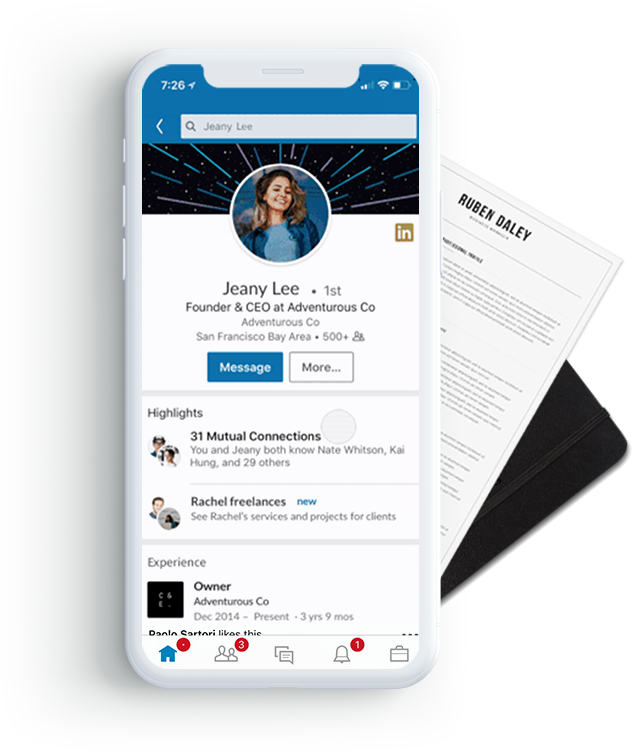First on LinkedIn refers to your first degree connections on the platform. These are people you are directly connected to on LinkedIn. Having first degree connections means that you may have access to their emails or mobile numbers.
Who Are Your First Degree (1st Degree) Connections?
First Degree (1st Degree) connections are business contacts, colleagues, or business associates that you are directly connected with. To connect to them, you may have sent a connection request that they’ve accepted, or you may accepted a connection request from them. These people are directly available through the LinkedIn message tool.
Interesting stats to take note of:
- 80% of LinkedIn users share their emails with their first degree connections.
- 26% of LinkedIn users share their mobile numbers with their first degree connections.
- 15% of LinkedIn users share their twitter account details.
If you are a B2B salesperson who wants to contact a prospect on LinkedIn, you’ll need to turn them into a first degree connection to get access to their email or phone number.
Who Are Your Second Degree (2nd Degree) Connections?
Your second-degree (2nd degree) LinkedIn connections mean that you are not directly connected to the person, but someone in your network is. When you visit people on your network, you will see mutual connections displayed directly above the “Connect Button.”
Unlike first-degree connections, you can’t send a message directly to second-degree connections. Therefore, you may choose to first send them a connection request.
Remember: You won’t have access to their contact details by clicking on the “Contact info” button.
If you want to skip this step, you can also send a LinkedIn inmail. Inmails are paid LinkedIn messages that enable you to direct message 2nd or 3rd degree connections. You can send inmails by getting a subscription to LinkedIn premium services such as LinkedIn Premium, LinkedIn Sales Navigator, or LinkedIn Recruiter.
What are your Third Degree (3rd Degree) Connections?
Third degree (3rd degree connections) are people that you have no connection with and who are not connected to anyone in your network. To send a connection request you’ll need to click on the “more” button under your profile picture.
Tips on How to Send Connection Requests on LinkedIn
Quick Tip
You can send 2nd or 3rd degree connections a direct message providing that you are on the same LinkedIn group or participating in the same LinkedIn event.
Tips To send Connection Requests On LinkedIn
Here are a few ideas on how to engage with other LinkedIn members.
Quick Tip
It is best to connect with other LinkedIn members you know or would like to know. Sending requests to random people can go nowhere. If enough people receive your connection request stating they do not know you, you could be banned from LinkedIn.
- Make a brief Introduction: Make sure you send one or two lines about who you are and what you do.
- Write about how you found them: It’s a good idea to mention how you found their profile. You may have met them at an industry, trade show or networking event, or you may have simply been looking for other professionals in your industry. If you mention how you found them, you will be more likely to pique their interest.
- Learn about them through their LinkedIn posts: Check their LinkedIn posts or their activity on other social media channels to learn more about them. Build up a warm connection by liking, commenting, or retweeting their posts. If there is something that interests you, use that as a conversation starter in your connection request.
- Leverage Mutual Connections: Take a look to see if you have any mutual connections. You never know someone on your network may be able to make an introduction.
- Establish common interests, groups, employers, or mutual connections. By looking at their profile, you may have more in common with them than you think. Look for common academic institutions, groups, interests, or anything that you share in common with them.
- Have clarity why you want to connect: You may want professional guidance, want to learn more about what they do, get constructive feedback on your resume, or to learn more about employment opportunities at their company. Having clarity about why you want to connect will help set expectations.



